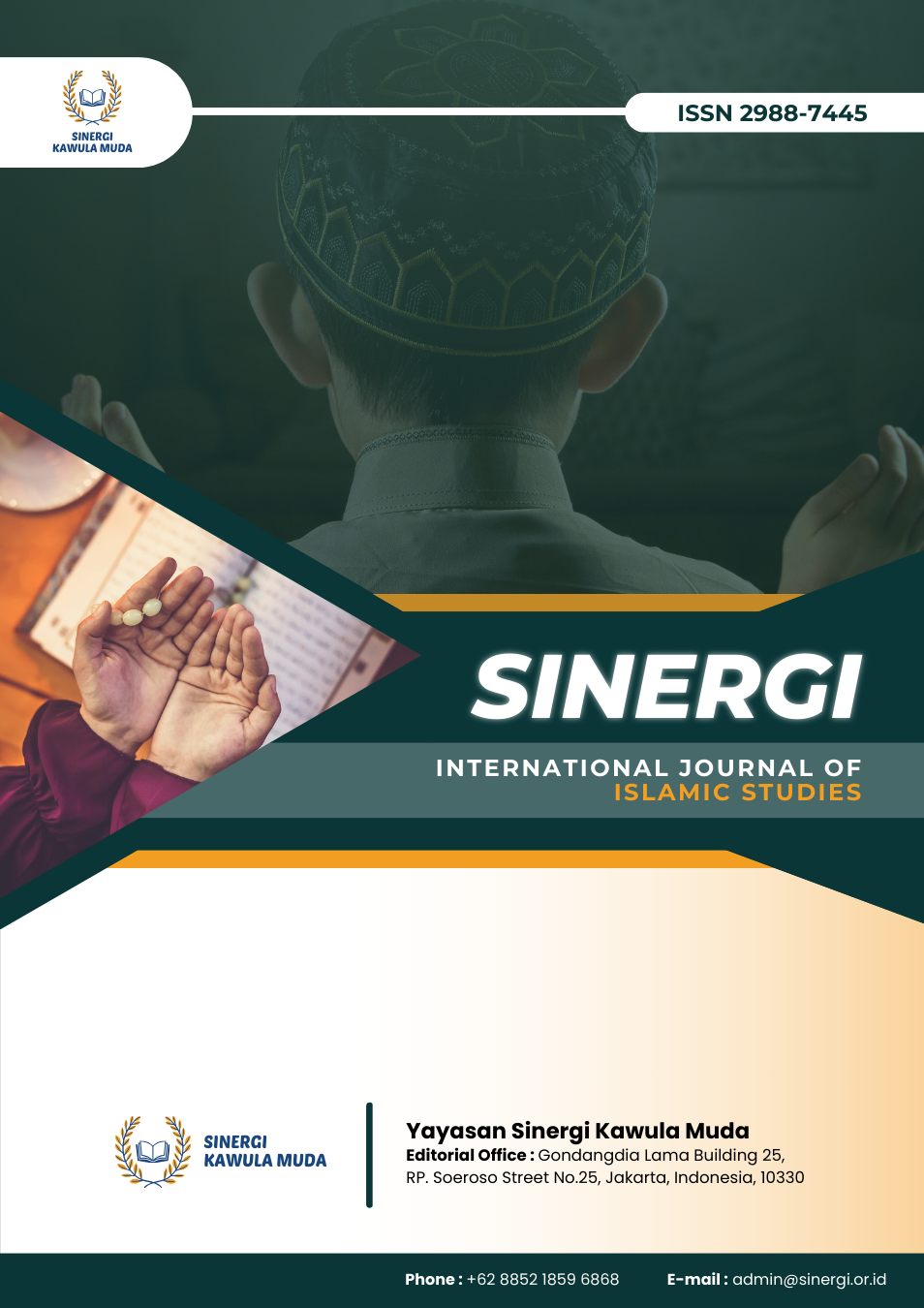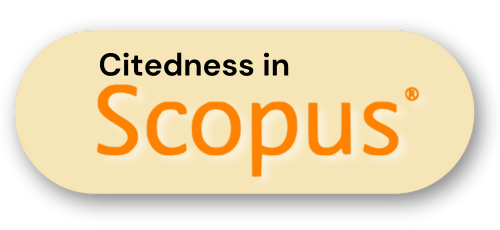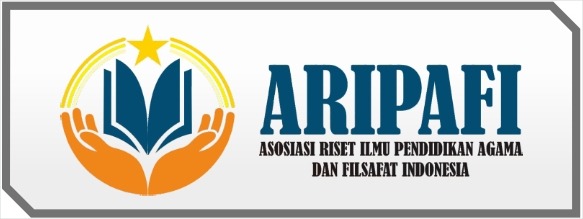The Role of Islamic Education in Preserving Cultural Identity Amidst Global Modernity
DOI:
https://doi.org/10.61194/ijis.v2i4.707Keywords:
Islamic Education, Cultural Identity, Selective Adaptation, Hidden Curriculum, Global Modernity, Educational Policy Reform, Identity FormationAbstract
This study presents a comprehensive narrative review examining the intersection of Islamic education and cultural identity construction in the context of global modernity. The research investigates how Islamic educational institutions navigate the tension between maintaining traditional religious values and adapting to contemporary global demands. Employing a narrative review method, the study synthesizes evidence from diverse empirical studies and theoretical frameworks that explore both structural and pedagogical dimensions of identity formation. Key findings indicate that Islamic identity is not a static entity but a dynamic construct shaped through selective adaptation, where traditional and modern elements coexist. Educational institutions such as pesantren and Islamic universities employ formal curricula alongside hidden curricula, which together shape students' values and beliefs. However, systemic challenges such as bureaucratic rigidity, limited infrastructure, and misaligned policies hinder effective identity development. The discussion integrates postcolonial and interdisciplinary theories to critique Western-centric educational models and advocate for culturally grounded approaches. The study concludes that responsive educational reforms, inclusive stakeholder collaboration, and strategic digital integration are crucial for sustaining Islamic identity in the modern era. This review underscores the need for culturally sensitive policy frameworks and calls for future research to explore hybrid educational models across diverse sociopolitical contexts.
References
Achruh, A., & Sukirman, S. (2024). An analysis of Indonesian Islamic higher education institutions in the era of globalization. International Journal of Learning Teaching and Educational Research, 23(9), 78-102. https://doi.org/10.26803/ijlter.23.9.5 DOI: https://doi.org/10.26803/ijlter.23.9.5
Alhosani, N. (2022). The influence of culture on early childhood education curriculum in the UAE. ECNU Review of Education, 5(2), 284-298. https://doi.org/10.1177/20965311221085984 DOI: https://doi.org/10.1177/20965311221085984
Chaplin, C. (2018). Salafi activism and the promotion of a modern Muslim identity. South East Asia Research, 26(1), 3-20. https://doi.org/10.1177/0967828x17752414 DOI: https://doi.org/10.1177/0967828X17752414
Formichi, C. (2014). Shaping Shiʿa identities in contemporary Indonesia between local tradition and foreign orthodoxy. Die Welt Des Islams, 54(2), 212-236. https://doi.org/10.1163/15700607-00542p04 DOI: https://doi.org/10.1163/15700607-00542p04
Husna, A., Mahfuds, Y., Uthman, Y., & Aprilianto, A. (2023). Building a Muslim worldview through Islamic education in the middle of globalization. Nazhruna Jurnal Pendidikan Islam, 6(1), 46-59. https://doi.org/10.31538/nzh.v6i1.2622 DOI: https://doi.org/10.31538/nzh.v6i1.2622
Obaid, Y., Abidin, A., Samsuddin, S., Kadir, S., & Baharuddin, A. (2024). Revealing identity to form student character: Application of the hidden curriculum in Islamic legal education. Samarah Jurnal Hukum Keluarga Dan Hukum Islam, 8(3), 1782. https://doi.org/10.22373/sjhk.v8i3.24061 DOI: https://doi.org/10.22373/sjhk.v8i3.24061
Rahman, T., Nurnisya, F., Nurjanah, A., & Hifziati, L. (2021). Hijrah and the articulation of Islamic identity of Indonesian millennials on Instagram. Jurnal Komunikasi Malaysian Journal of Communication, 37(2), 154-170. https://doi.org/10.17576/jkmjc-2021-3702-10 DOI: https://doi.org/10.17576/JKMJC-2021-3702-10
Ravanbakhsh, R., & Taqavi, M. (2020). Muslim scholars and technological volition. Technology in Society, 61, 101263. https://doi.org/10.1016/j.techsoc.2020.101263 DOI: https://doi.org/10.1016/j.techsoc.2020.101263
Salim, A., Suyuti, I., Prihantoro, W., Muqorrobin, A., & Nawangsasi, E. (2025). Integrating Javanese culture in Islamic education. Indonesian Journal of Islam and Muslim Societies, 14(2), 381-407. https://doi.org/10.18326/ijims.v14i2.381-407 DOI: https://doi.org/10.18326/ijims.v14i2.381-407
Samıer, E. (2020). Missing non-Western voices on social justice for education: A postcolonial perspective on traditions of humanistic marginalized communities. In Critical Human Rights, Citizenship, and Education (pp. 105-126). https://doi.org/10.1007/978-3-030-14625-2_45 DOI: https://doi.org/10.1007/978-3-030-14625-2_45
Scott‐Baumann, A., Guest, M., Naguib, S., Cheruvallil-Contractor, S., & Phoenix, A. (2020). Islam on Campus. https://doi.org/10.1093/oso/9780198846789.001.0001 DOI: https://doi.org/10.1093/oso/9780198846789.001.0001
Sumanti, S., Nunzairina, N., & Salminawati, S. (2024). The evolution of Islamic educational institutions in North Sumatra Indonesia. Nazhruna Jurnal Pendidikan Islam, 7(1), 1-19. https://doi.org/10.31538/nzh.v7i1.4419 DOI: https://doi.org/10.31538/nzh.v7i1.4419
Tolchah, M. (2014). The political dimension of Indonesian Islamic education in the post-1998 reform period. Journal of Indonesian Islam, 8(2), 284. https://doi.org/10.15642/jiis.2014.8.2.284-298 DOI: https://doi.org/10.15642/JIIS.2014.8.2.284-298
Fauzi, F., Abdinagoro, S., Kartono, R., Furinto, A., & Hamsal, M. (2023). Extracting public opinion and popularity of islamic bank in indonesia: a big data of social media and google trends approach. E3S Web of Conferences, 426, 02019. https://doi.org/10.1051/e3sconf/202342602019 DOI: https://doi.org/10.1051/e3sconf/202342602019
Gaikwad, M., Ahirrao, S., Kotecha, K., & Abraham, A. (2022). Multi-ideology multi-class extremism classification using deep learning techniques. IEEE Access, 10, 104829-104843. https://doi.org/10.1109/access.2022.3205744 DOI: https://doi.org/10.1109/ACCESS.2022.3205744
Halverson, J., Ruston, S., & Trethewey, A. (2013). Mediated martyrs of the arab spring: new media, civil religion, and narrative in tunisia and egypt. Journal of Communication, 63(2), 312-332. https://doi.org/10.1111/jcom.12017 DOI: https://doi.org/10.1111/jcom.12017
Hasanah, U., Anam, K., & Muassomah, M. (2024). Modernising tradition: reinforcing aswaja al-nahdhiyah authority among millennials in indonesia. HTS Teologiese Studies / Theological Studies, 80(1). https://doi.org/10.4102/hts.v80i1.9425 DOI: https://doi.org/10.4102/hts.v80i1.9425
Hefner, C. (2022). Morality, religious authority, and the digital edge. American Ethnologist, 49(3), 359-373. https://doi.org/10.1111/amet.13088 DOI: https://doi.org/10.1111/amet.13088
Herfroy-Mischler, A. and Barr, A. (2018). Jihadist visual communication strategy: isil’s hostage executions video production. Visual Communication, 18(4), 519-548. https://doi.org/10.1177/1470357218803396 DOI: https://doi.org/10.1177/1470357218803396
Hoffmann, T. and Larsson, G. (2013). Muslims and the new information and communication technologies. https://doi.org/10.1007/978-94-007-7247-2 DOI: https://doi.org/10.1007/978-94-007-7247-2
Indainanto, Y., Dalimunthe, M., Sazali, H., Rubino, R., & Kholil, S. (2023). Islamic communication in voicing religious moderation as an effort to prevent conflicts of differences in beliefs. Pharos Journal of Theology, 104(4). https://doi.org/10.46222/pharosjot.104.415 DOI: https://doi.org/10.46222/pharosjot.104.415
Kadir, K., Ashaari, N., & Salim, J. (2018). Credibility dimensions for islamic information in social media. International Journal on Advanced Science Engineering and Information Technology, 8(5), 1864-1872. https://doi.org/10.18517/ijaseit.8.5.6434 DOI: https://doi.org/10.18517/ijaseit.8.5.6434
Kamali, M. (2012). Multiple modernities and mass communications in muslim countries. Global Media and Communication, 8(3), 243-268. https://doi.org/10.1177/1742766512459121 DOI: https://doi.org/10.1177/1742766512459121
Kramer, M. (2021). Plural media ethics? reformist islam in india and the limits of global media ethics. Dialectical Anthropology, 45(3), 275-296. https://doi.org/10.1007/s10624-021-09626-5 DOI: https://doi.org/10.1007/s10624-021-09626-5
Lemke, T. and Habegger, M. (2017). A master institution of world society? digital communications networks and the changing dynamics of transnational contention. International Relations, 32(3), 296-320. https://doi.org/10.1177/0047117817747666 DOI: https://doi.org/10.1177/0047117817747666
Lengauer, D. (2018). Sharingsemangat taqwa: social media and digital islamic socialities in bandung. Indonesia and the Malay World, 46(134), 5-23. https://doi.org/10.1080/13639811.2018.1415276 DOI: https://doi.org/10.1080/13639811.2018.1415276
Miftakhuddin, M. (2020). Pengembangan model pendidikan agama islam dalam membentuk karakter empati pada generasi z. Jurnal Pendidikan Agama Islam, 17(1), 1-16. https://doi.org/10.14421/jpai.2020.171-01 DOI: https://doi.org/10.14421/jpai.2020.171-01
Millie, J. (2013). The situated listener as problem: ‘modern’ and ‘traditional’ subjects in muslim indonesia. International Journal of Cultural Studies, 16(3), 271-288. https://doi.org/10.1177/1367877912474536 DOI: https://doi.org/10.1177/1367877912474536
Muchtar, N. and Ritchey, J. (2014). Preaching, community, and convergence: use of old and new media by progressive indonesian islamic leaders. International Communication Gazette, 76(4-5), 360-376. https://doi.org/10.1177/1748048514524099 DOI: https://doi.org/10.1177/1748048514524099
Naeem, M. (2019). Understanding the role of social networking platforms in addressing the challenges of islamic banks. The Journal of Management Development, 38(8), 664-680. https://doi.org/10.1108/jmd-04-2019-0107 DOI: https://doi.org/10.1108/JMD-04-2019-0107
Nasih, A., Darwis, D., & Hamid, A. (2023). Countering islamic radicalism among indonesian university students: an investigation on social media using line official account. Journal of Al-Tamaddun, 18(1), 179-192. https://doi.org/10.22452/jat.vol18no1.15 DOI: https://doi.org/10.22452/JAT.vol18no1.15
O’Loughlin, B., Vaccari, C., Ozgul, B., & Dennis, J. (2017). Twitter and global political crises. Middle East Journal of Culture and Communication, 10(2-3), 175-203. https://doi.org/10.1163/18739865-01002006 DOI: https://doi.org/10.1163/18739865-01002006
Puspitarini, D., Degeng, I., Praherdhiono, H., & Suryati, N. (2023). Humanistic pesantren: systematic literature review and bibliometric visualization analysis on character, moral, and ethical values. Pertanika Journal of Social Sciences and Humanities, 31(2), 465-490. https://doi.org/10.47836/pjssh.31.2.01 DOI: https://doi.org/10.47836/pjssh.31.2.01
Qazi, A., Hardaker, G., Ahmad, I., Darwich, M., Maitama, J., & Dayani, A. (2021). The role of information & communication technology in elearning environments: a systematic review. IEEE Access, 9, 45539-45551. https://doi.org/10.1109/access.2021.3067042 DOI: https://doi.org/10.1109/ACCESS.2021.3067042
Rahman, K. and Emadi, A. (2018). Representations of islam and muslims in new zealand media. Pacific Journalism Review – Te Koakoa, 24(2), 166-188. https://doi.org/10.24135/pjr.v24i2.419 DOI: https://doi.org/10.24135/pjr.v24i2.419
Rahmawati, R. and Febriani, S. (2021). Investigating the problems of learning arabic for islamic universities in the era of covid-19 pandemic. International Journal of Language Education, 5(4), 324. https://doi.org/10.26858/ijole.v5i4.19732 DOI: https://doi.org/10.26858/ijole.v5i4.19732
Rasiam, R., Umiyati, U., Habibullah, H., Syahrir, D., & Said, M. (2023). Integration of new media and prophetic communication enhanced for zakah, infāq, ṣadaqah, and waqf fundraising: a case study of baitulmaal munzalan indonesia. Journal of Islamic Law, 4(1), 28-46. https://doi.org/10.24260/jil.v4i1.1167 DOI: https://doi.org/10.24260/jil.v4i1.1167
Saeed, M. (2021). Newspapers and dynamics of religious communication: the test case of sufi news. Journal of Islamic Thought and Civilization, 11(1), 201-216. https://doi.org/10.32350/jitc.111.11 DOI: https://doi.org/10.32350/jitc.111.11
Sulaiman, A. and Ahmadi, D. (2020). Empowerment communication in an islamic boarding school as a medium of harmonization. Jurnal Komunikasi Malaysian Journal of Communication, 36(4), 323-338. https://doi.org/10.17576/jkmjc-2020-3604-20 DOI: https://doi.org/10.17576/JKMJC-2020-3604-20
Takhim, M., Sonjaya, A., Salim, Z., Rahman, A., Basmar, E., Abdullah, R., … & Ali, M. (2023). The synergy of islamic banks and muslim-friendly tourism: patterns of halal industry development in indonesia. International Journal of Sustainable Development and Planning, 18(9), 2723-2731. https://doi.org/10.18280/ijsdp.180911 DOI: https://doi.org/10.18280/ijsdp.180911
Waheed, A., Yang, J., & Webber, J. (2018). Reinforcing consumers’ impulsive buying tendencies through m-devices and emails in pakistan. Interdisciplinary Journal of Information Knowledge and Management, 13, 045-060. https://doi.org/10.28945/3964 DOI: https://doi.org/10.28945/3964
Wahyuni, P. and Hassan, B. (2015). Iklan produk penjagaan kesihatan di malaysia dan indonesia: sebuah analisis kritis wacana media. Jurnal Komunikasi Malaysian Journal of Communication, 31(1), 221-240. https://doi.org/10.17576/jkmjc-2015-3101-12 DOI: https://doi.org/10.17576/JKMJC-2015-3101-12
Warigon, C., Mkanda, P., Banda, R., Zakari, F., Damisa, E., Idowu, A., … & Vaz, R. (2015). The journalists initiatives on immunisation against polio and improved acceptance of the polio vaccine in northern nigeria 2007–2015. The Journal of Infectious Diseases, 213(suppl 3), S86-S90. https://doi.org/10.1093/infdis/jiv545 DOI: https://doi.org/10.1093/infdis/jiv545
Witro, D. (2020). Maqashid syari’ah as a filter of hoax through al-quran perspective. Jurnal Ilmiah Al-Syir Ah, 18(2), 187. https://doi.org/10.30984/jis.v18i2.1133 DOI: https://doi.org/10.30984/jis.v18i2.1133
Yusof, N. (2016). The credibility of islamic religious institutional websites in malaysia. Jurnal Komunikasi Malaysian Journal of Communication, 32(2), 82-104. https://doi.org/10.17576/jkmjc-2016-3202-05 DOI: https://doi.org/10.17576/JKMJC-2016-3202-05






